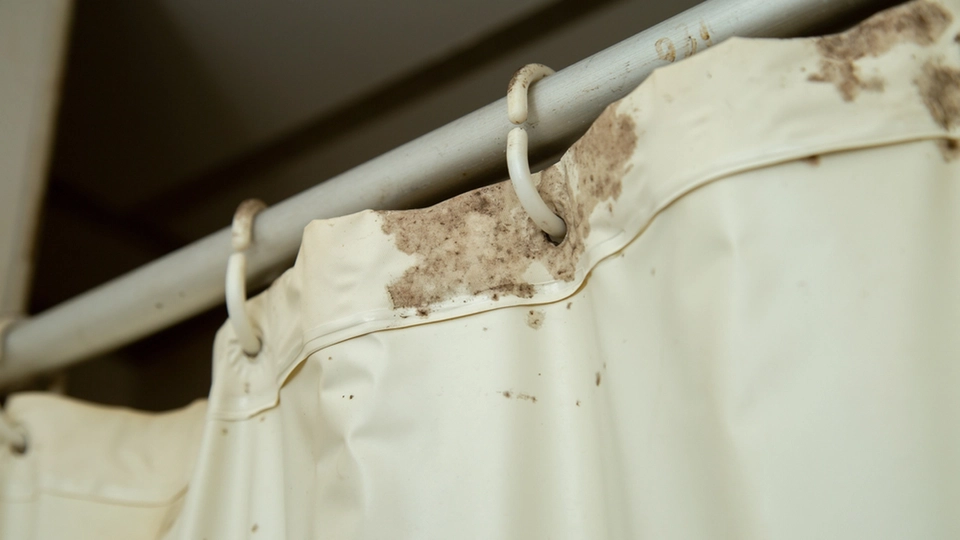Why Mould on Curtains Should Never Be Ignored
Curtains are often overlooked when it comes to mould growth, but they can become breeding grounds for mould and mildew, especially in damp, poorly ventilated rooms like bathrooms, kitchens, and bedrooms.
If left untreated, mould on curtains can cause:
-
Unpleasant odours
-
Health problems (like allergies and asthma)
-
Permanent fabric damage
If your curtains are repeatedly affected due to property dampness and your landlord isn’t addressing it, you may have grounds to start a housing disrepair claim.
This guide covers everything you need to know about how to get mould out of curtains, including how to remove mould without washing, whether vinegar works, and how to prevent it from returning.
What Causes Mould on Curtains?
Mould spores settle and multiply on curtains when:
-
There is high humidity in the room
-
Condensation builds up on windows near the fabric
-
The room has poor ventilation
-
Curtains remain damp or dirty over time
-
Leaks in windows or roofs allow moisture in
Heavy, lined curtains are particularly vulnerable because they retain moisture longer.
How to Remove Mould from Curtains – Step-by-Step
If your curtains are machine-washable and the mould is treatable, follow these steps:
Step 1: Brush Away Loose Mould Outdoors
-
Take the curtains outside
-
Gently brush off mould spores using a soft-bristled brush
-
Wear gloves and a mask to avoid inhaling spores
Important: Never brush mould indoors—it spreads airborne spores throughout your home.
Step 2: Pre-Treat Stains with Vinegar
Many people ask, Will vinegar remove mould from curtains?
The answer is yes—white vinegar is highly effective at killing mould on fabrics without bleaching or damaging coloured curtains.
Here’s how:
-
Mix one part white vinegar with one part water
-
Spray or sponge the solution onto the mouldy areas
-
Let it sit for at least one hour
Vinegar neutralises mould and removes the musty smell without harming the fabric.
Step 3: Machine Wash (If Care Label Allows)
-
Wash curtains on the hottest temperature safe for the fabric
-
Use regular detergent plus one cup of white vinegar added to the rinse cycle
-
For stubborn stains, add baking soda to the wash to boost cleaning power
Tip: Check the label first—some delicate or dry-clean-only curtains should not be machine washed.
Step 4: Sun-Dry Thoroughly
After washing:
-
Hang the curtains outdoors in direct sunlight if possible
-
Sunlight naturally kills lingering mould spores
-
Ensure they are completely dry before bringing them back inside
If drying outside isn’t an option, use fans and dehumidifiers to speed up drying indoors.
How to Remove Mould from Curtains Without Washing
If your curtains are not washable or too delicate, you can still clean mould without a full wash:
-
Vacuum the fabric with a HEPA-filter vacuum to remove surface spores.
-
Spot clean with vinegar solution:
-
Dampen a clean cloth with a vinegar-water mix
-
Blot (don’t rub) the mouldy spots
-
Gently wipe with a second clean, damp cloth to rinse
-
-
Apply a fabric-safe mould remover spray if needed (test a hidden area first).
-
Dry completely using fans or near a sunny window.
This method is ideal for curtains made from silk, velvet, or dry-clean-only materials.
Natural Remedies to Clean Mould off Curtains
If you prefer eco-friendly options, here are natural treatments for curtain mould:
-
Tea Tree Oil Solution: Add 10 drops of tea tree oil to 1 cup of water, spray onto affected areas, and leave to dry.
-
Baking Soda Paste: Mix baking soda and water into a thick paste, apply to the mould stain, and wipe clean after 20 minutes.
-
Lemon Juice and Salt: For lighter fabrics, apply lemon juice and sprinkle salt, then dry in the sun before rinsing.
These methods are gentle and safe for most coloured fabrics.
Preventing Mould from Returning on Curtains
Removing mould is only half the battle—prevention is essential to stop it coming back.
Tips to prevent mould growth:
-
Ventilate rooms daily by opening windows and using extractor fans
-
Use dehumidifiers to maintain humidity below 50%
-
Keep curtains off damp walls
-
Wipe condensation off windows every morning during cold months
-
Wash or steam-clean curtains regularly, even if they look clean
Persistent mould is often a sign of deeper property issues.
If that’s the case in your home, learn about your options for a damp and mould claim.
When to Seek Professional Help
You should seek professional help if:
-
Mould keeps returning even after cleaning
-
Mould spreads to walls, ceilings, or floors
-
You notice an ongoing musty smell
-
Household members experience respiratory issues or allergies
Professional cleaning services can salvage heavily mould-infested curtains.
If your mould problem stems from property disrepair, you may also need support.
Explore your rights on our housing disrepair claims page.
Final Thoughts: Act Quickly and Protect Your Curtains
Getting mould off curtains requires more than a surface clean; you must kill the mould spores and tackle the moisture causing the problem.
Vinegar is an effective, affordable solution for both washable and non-washable curtains.
But if mould keeps appearing despite your efforts, it’s time to look deeper into ventilation issues, leaks, and property maintenance.
If your landlord refuses to take action, the Housing Disrepair Team can help you secure necessary repairs and compensation.






